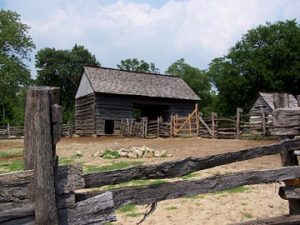Illinois Scenic Byways elevate the art of sightseeing
By David Hubbard

Oh for the love of a road trip, that American tradition following WWII when the family would pile into the automobile and hit the road just to see what they could see. Of course the art of sightseeing really kicked into gear once motorcoaches took the two-lane roads through America’s small towns and diverse topography.
The month-long sojourns may have diminished, but the fascination for motorcoach tours has not waned. Coach travelers are staying closer to home, searching their own back roads for adventure and new experiences. As more look to motorcoach travel, opportunities prevail for charter and tour operators as well as the merchants along America’s Byways®.
The Federal Highway Administration is creating a distinctive collection of American roads that contribute to a unique travel experience. The Secretary of Transportation recognizes certain roads as National Scenic Byways or All-American Roads based on their archaeological, cultural, historic, natural, recreational, and scenic qualities. There are 125 such designated American Byways in 44 states.
In Illinois seven such roads keep history alive as members in the program. These roads continue to lead travelers alongside great rivers to retrace the steps of ancient cultures, European explorers and American pioneers, and enjoy countless must-see attractions, significant historical markers, hotels, shops and restaurants.
Great River Road in Illinois
Starting in East Dubuque, the 550-mile Great River Road tells the story of the mighty Mississippi, winding along the western border of Illinois. The road travels through woodlands, farmland, river towns and Oquawka’s Big River State Forest to its end at the southern tip in Cairo, IL. Sacred Native American sites dot the route along the riverbank.

Ohio River Scenic Byway
Steeped in natural and cultural history, the 967-mile Ohio River Scenic Byway covers three states where every stop has a story or a lesson from prehistoric fossil beds to jazz festivals, antique shops and amusement parks set in the culture of small-town communities along the river valley. In Illinois the Byway extends for 188 miles through the Ohio River Valley. Historic sites include Fort Massac, where a military history stretches as far back as 1540 and the explorer DeSoto.
Meeting of the Great Rivers Scenic Byway
Showcasing the junction of the Mississippi, Illinois and Missouri Rivers, some think the landscape along the 33-mile Meeting of the Great Rivers National Scenic Byway is the most beautiful on the Mississippi. Located 30 miles north of St. Louis, MO, the attractions include Pere Marquette State Park, the Lewis and Clark Interpretive Center, Civil War prison ruins, Victorian-era homes and hundreds of miles of nature trails. Meetings of the Great Rivers Scenic Byway has been hailed as one of the best scenic drives during the fall color season.
The National Road
This scenic byway was the first of its kind, crossing the state of Illinois from near the Wabash River to the Mississippi. From the National Road visitors can cruise through the rolling countryside and prairie fields where grazing cattle and weathered barns dot the landscape. Road trippers can stop in small towns along the way to visit county fairs, Main Street stores, antique shops and soda fountain parlors. History buffs can visit the Lincoln Log Cabin State Historic Site, Cahokia Mounds State Historic Site, Collinsville Historical Museum and much more.
Lincoln Highway
Once the most famous road in America, the first successful, all-weather, coast-to-coast, automobile highway stretches from New York’s Times Square to Lincoln Park in San Francisco and crosses through 12 states. The Illinois portion is the only par to have attained designation as a National Scenic Byway. Historical sites along the 179-mile stretch between Lynwood and Fulton and the Mississippi River include the 1916 Arche Fountain in Chicago Heights, the Paramount Arts Centre in Aurora and Ronald Reagan’s boyhood home in Dixon.
Route 66
U.S. Highway 66 began and officially ended in Illinois. The iconic highway gained fame as the shortest, year-round route between the Midwest and the Pacific coast for anyone with a car. Part of its charm was the gaudy roadside attractions.
As America’s main thoroughfare, the 2,500-mile highway came to symbolize unlimited mobility and freedom of the road. John Steinbeck christened Route 66 the Mother Road. Today its remnants exist as living history of the nation on the move.
The Route 66 Association of Illinois formed in 1989 to preserve, promote and enjoy the past and present highway. This group develops and updates historic route markers, traveler’s guides, museums and signage to highlight attractions. Through the dedication of its members, the association has preserved many of the more tangible relics along the old road. On September 22, 2005, Illinois Historic Route 66 was designated a National Scenic Byway.
